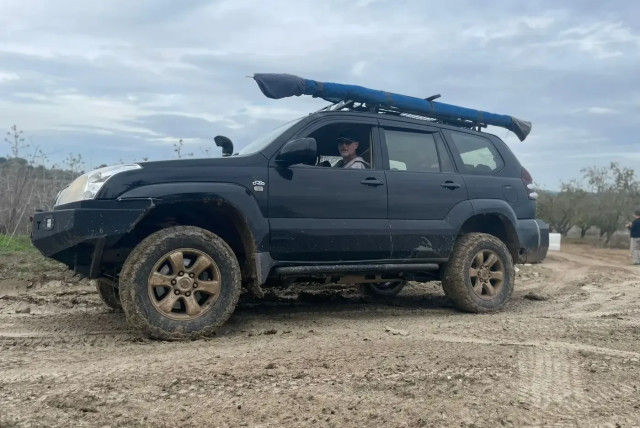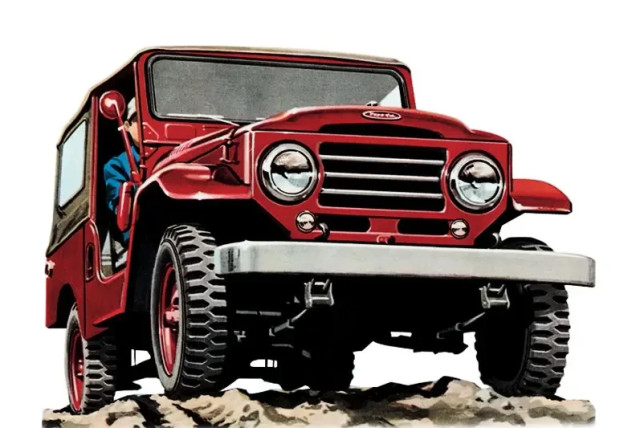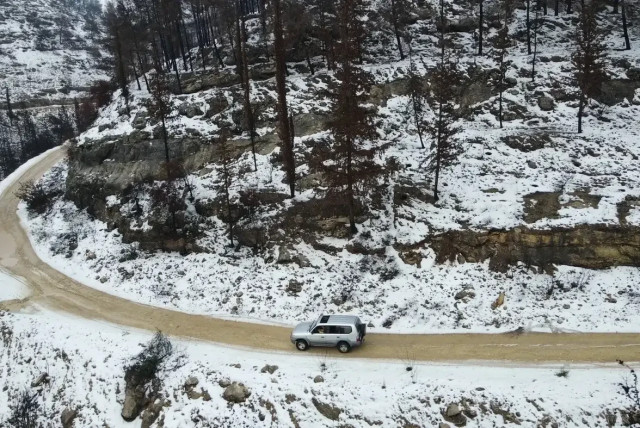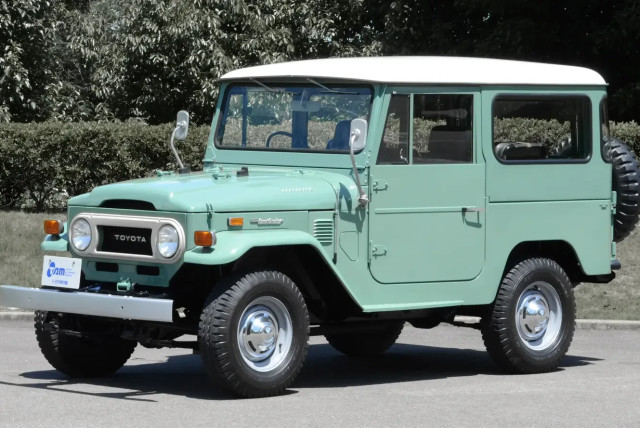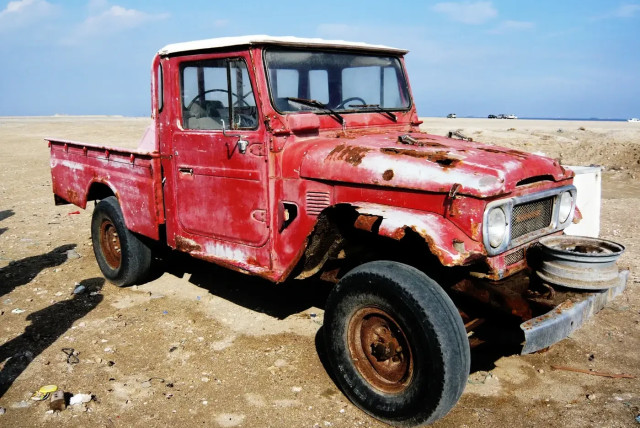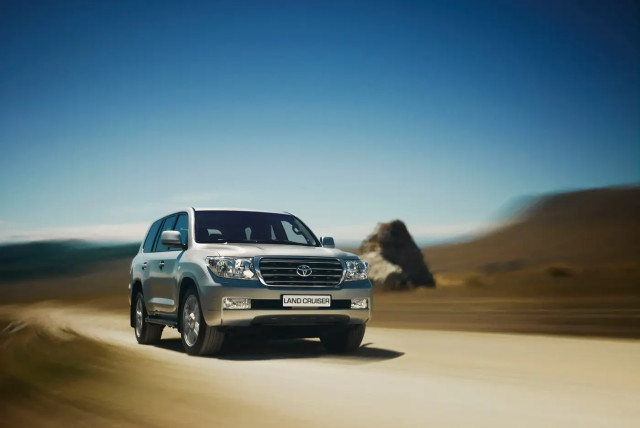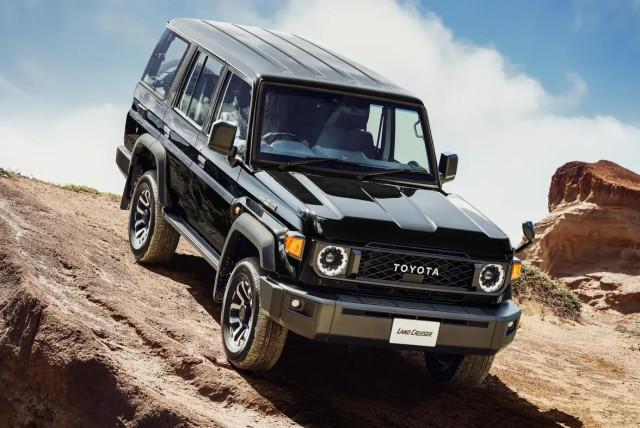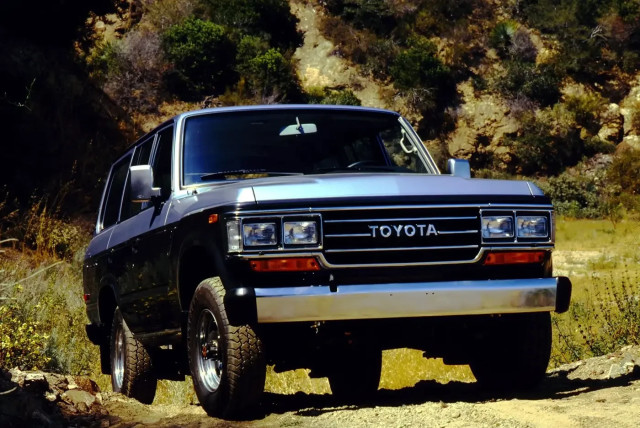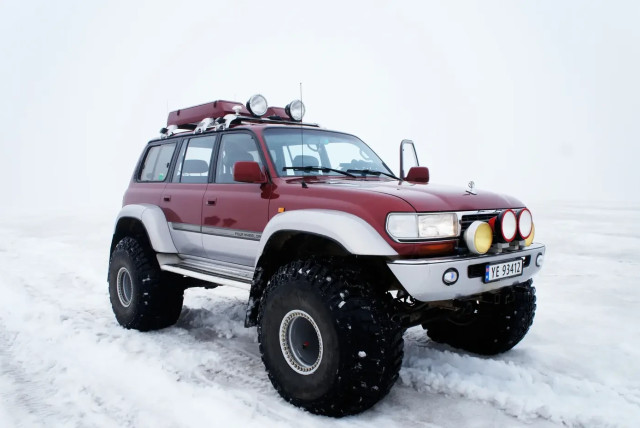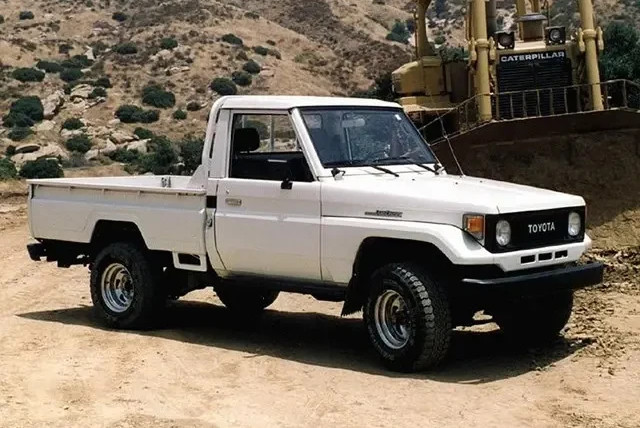A brief history of the Land Cruiser, just before we drive the new gen
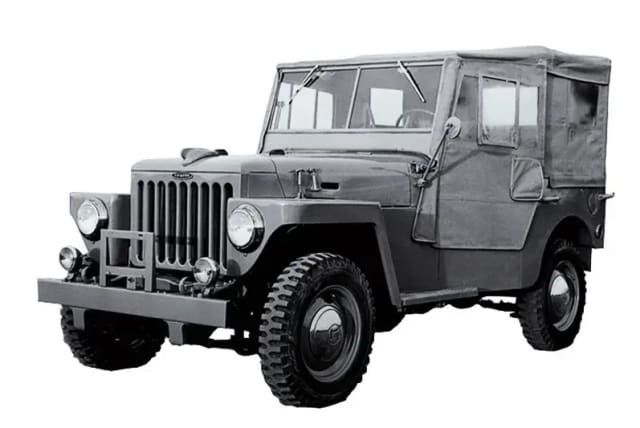
Enthusiastic devotees, legendary survival stories, and a loyal community - the saga of the Toyota Land Cruiser before its new generation drive.
We know that in different languages identical words have completely different meanings. Say, for example, to a Persian speaker, "I'm crazy about the cold!" And see him blush. In the automotive world we also know that models with the same name are actually two different cars in different markets. But when it comes to Toyota and Land Cruiser this story seems to have gone or rather - traveled - to a very far place. Because with the exception of those who are familiar with the family and historical ramifications of Toyota Land Cruiser, if you were to meet a resident of South Africa, the United Arab Emirates, Japan or Iceland and show him a picture of your Israeli Land Cruiser, he would mostly make a strange face and tell you in a variety of languages: "It's definitely a Toyota, but not like this It looks like a Land Cruiser at all."
The reason? Toyota Land Cruiser has been for many years not one model, but a whole family of vehicles covered under the same super umbrella, but located in completely different places. Just before meeting the new generation of "our" Land Cruiser, we are putting the lineage in order.
The years after World War II were difficult years for the Japanese economy which, beyond the economic damage, sanctions and fines, also faced far-reaching changes in the social structure of the very conservative country. Among the victims of this situation was also Toyota, even then a small car manufacturer with big ambitions. At the same time, the struggles between the blocs led to tensions in neighboring Korea and in June 1950 the Korean War broke out.
The United States, which enters the war on the side of the South against the Soviet Union which supports the North, uses Japan as a rear base for its forces and needs as many vehicles as possible. The Americans recognize a double opportunity - to create a local and fast supply line for vehicles and also to allow the Japanese auto industry a push forward.
The one who picks up the gauntlet is Toyota, which is in a hurry to take a platform of a light truck to combine it with another of its vehicles, the AK10 (a Japanese imitation of a Willys Jeep that ultimately did not enter service) and turn it into a dual-wheel drive vehicle inspired by the original Jeep. Even then it was so identified with off-road vehicles that Toyota did not get confused and simply called it "Toyota Jeep BJ", where the letters BJ are a combination of the letter B in the name of the engine series it used and the J is an abbreviation for Jeep.
Like the original Jeep, the pace of development was fast and hectic, and in January 1951 a prototype was ready with a six-cylinder 3.3-liter engine with a capacity of 75 horses, dual drive and a very basic chassis that reminded a lot of the Willys. During its test drive in July, the BJ had already climbed to point number 6 out of 10 on Mount Fuji, which was the highest a vehicle had climbed up to that point. The US Army eventually gave up on Toyota's design, but the manufacturer, realizing that it had something special in its hands, refused to give up. In addition, as you can imagine, Willis also had objections to the explicit use of the name "Shela" and after several iterations and updates in 1953 the production of the "Jeep BJ" begins. A year later, following a lawsuit by Willys, the name is changed after respect and the vehicle receives the nickname "Land Cruiser".
So the name Jeep BJ was changed to FJ20, the driver's environment became less spartan and all passengers got more comfortable seats, the leaf springs got a few more layers and the engine was replaced. Still with 6 cylinders, but with a volume of 3.9 liters and 135 hp. Later, a closed passenger version was added. And the FJ20 also becomes the first vehicle of the manufacturer to be sold outside of Japan in 1957 and a year later it arrives in the United States where a single example is sold, Only one of the vehicle. Only one. - The future is in the past: Toyota unveiled the new Land Cruiser - Exclusive drive: Land Cruiser 79 with the revolutionary Israeli suspension system - Road test: The renewed and strengthened Land Cruiser
In just a few years, the Land Cruiser has already created a reputation and name for itself as a tough, passable and durable vehicle. Toyota realizes that there is something here that is worth continuing to develop and in 1960 it presents the FJ40. This model, which is considered the most classic of the Land Cruisers, already benefits from more advanced production methods, from the use of a box with a low transmission ratio, a 4.2 liter engine that was added in 1975. And the FJ40, with its multitude of vehicles with a hard or collapsible roof, short or long box, and its wheelbase versions becomes in fact the springboard that flies this name up when it is used by research expeditions, farmers, foresters, hikers, ranchers and who not all over the world . Descending into the intricacies of the sub-versions of this model may be a confusing and long journey but we will just note that it also had the 41 and 42 with the short wheelbase, the 43,44 and 46 with the medium wheelbase and the 45 and 47 with a base Long wheels. How successful was he? The last FJ40 rolls off the production line in 1984, 24 years after the model's launch.
In 1967, when the FJ40 was still taking off, Toyota simultaneously introduced the Land Cruiser 55. A more passenger-friendly closed body, less rough than the 40 and still with uncompromising off-road capabilities. Also the engine, initially the 3.9 and then 4.2 liters, get a new design that makes them more pleasant even when cruising at highway speed. This was actually the first split experienced by the Land Cruiser name. A split from which an entire lineage of models was born that continues to this day and actually creates another race line for the model.
When the 55 is replaced in 1980 by the 60, which in turn is replaced in 1989 by the 80, replaced by the 100 in 1998 followed by the 200 in 2008 and the 300 introduced in 2023. Throughout all these years , they gained the status of indestructible vehicles. They could be seen in the suburbs of Salt Lake City or tearing through the deserts in the Dakar Rally from which Toyota returns with first place in the standard diesel category three times with these models.
Over the years, this series has become more and more road-oriented, more refined, with more convenience and compact accessories, but all along the way while maintaining very high off-road capabilities, almost without compromise. In Israel we didn't really get to see her. There were a few as embassy vehicles or in white color with the inscription UN on them and we pretended in the days when Toyota was still subject to the Arab boycott and was not sold in Israel.
Only in 2008, when Toyota had already established a foothold here, the 200 was marketed here by the importer Union Motors, when its main client was the Prime Minister's Office and the personal security unit. The importer had to beg them to buy the rest of the tools, because after all, half a million shekels for a Toyota in 2008. In retrospect, those who did purchase one discovered that it was a very successful stock, try to buy one of these privately from someone today. - A new ambulance in the security forces: protected, with off-road capability and a V8 engine And while the 55 split the lineage towards the relaxed and luxurious Buach, in 1984 a successor to that tough FJ40 was presented - it was the "Series 70" - like its predecessor, it also put offenses and survival above all else. It too came in a variety of lengths, bodies, versions, underwent a variety of facelifts and it too, like its counterparts from England (Land Rover Defender) and Germany (Mercedes G Wagon) - was discovered by special units and military forces around the world as the work tool you want by your side in the most remote areas, When terrain conditions are at least as tough as your enemies. Even here at the IDF, it came to tests to see if it would be suitable to replace the aging Defenders. The 70 is active, kicking, pulling, dragging, loading and pushing to this day in the markets of Africa, Australia, Asia and others and will probably continue to do so long after us.
The next plot branch also takes place in 1984. Toyota realized that in practice a gap was beginning to form between the tough tool that is the 70 and the 60 and 80 series that were getting bigger and more expensive. A gap that she wanted to fill with another model, one that could also compete with the Mitsubishi Pajero for example. To this race line, the third in number, was attached the nickname Prado - which means "field" or "meadow" in Spanish and Portuguese. It was also the model whose third generation introduced in 1996 came to us in Israel in 1998, after Toyota finally opened official showrooms here in 1992. The Prado landed as part of a rising wave of off-road vehicles, mainly Japanese, which landed on a market that had learned to like off-road vehicles in the army, but was mostly familiar with the versions of the mythical American Jeep, some Wagonirs and Chevrolet Blazers and a few small Suzukis.
Along with the Helmed Cruiser Prado, the Mitsubishi Pajero, Land Rover Discovery 2, Nissan Terrano and Isuzu Trooper landed here - all of them, needless to say, are no longer with us today, not as new, not in the original format. But leave, let's let the numbers do the talking, as of today there are 23,616 Land Cruisers on Israel's roads, this compared to 7,841 Mitsubishi Pajeros, 1,765 Discoverers, 1,568 Troopers and Nissan has 693 active units left.
And so the Land Cruiser landed in Israel in a model called "90" in the five-door version or "95" in the 3-door version. He received a sympathetic reception, became the undisputed king of the category and gained himself a very enthusiastic and loyal clientele. Although in its normal equipment versions it was a rather spartan vehicle, and quiet and refined it had never been, it did offer a combination of comfort, spaciousness, reasonable handling on the road, lukewarm performance from the 3 liter 125 hp engine, but very high capabilities in the field and above all These are the reputation of reliability and durability that the name "Land Cruiser" bears. Over the years, the model has been renewed, updated, refined and strengthened. A common rail injection intercooler was added to the engine and the power was increased to 163 hp. - Toyota Land Cruiser vs Sanyong Rexton in a comparative test - Comparative terrain: Toyota Land Cruiser vs Mitsubishi Pajero.
In 2004, the 90 was replaced by the 120 and 125 (again, a long and short version accordingly), a fifth gear was added to the gearbox and the power climbed a little more to 173 hp. The differential lock became electronic, the passenger compartment even a little more. Toyota She dropped the nickname Prado, and started calling the new generation Land Cruiser in Israel as well. Then something strange happened to the Japanese SUV: perhaps because of the price that placed it in the luxury car league, thanks to the popular 7-seater version and Toyota's reputation for reliability, the Land Cruiser became a symbol of the Israeli Sestos. Sales soared About 2,000 tools a year, after businessmen and well-to-do families who never went to the area bought it. At Levi Yitzhak's price list, it became this model that does not lose value, and in practice it is still sold above the price list.
In 2010 we got the Land Cruiser 150, which was kind of another version update. The power increased to 190 hp and then decreased to 177 hp with the engine change to 2.8 liters in 2015. It has since undergone another facelift in 2018 and serves to this day, until it is finally replaced by the all-new 250. Over the years, the bulk of the sales went towards the diesel engines, but here and there it was also possible to buy its gasoline versions offered by the 250 and 283 hp suppliers with a tremendous thirst for gasoline.
But if you got dizzy from all the numbers and names, leave for a moment, did we say enthusiastic absorption? Did we say devout fans? So here are two of them. Amir Goldstein bought a Land Cruiser 90 model 2003 gasoline, and when I write "bought" I mean buying from the showroom. This man is celebrating 21 years of marriage with Land Cruiser and when I dare to bring up the possibility of trying something else, he is not even ready to hear, "no thought of anything else, not looking either to the right or to the left". Why actually? "Look," he explains, "I trust him, I just trust him. I know that I go into the field with him and come out safe." Amir's Land Cruiser already has more than 330,000 km, which is not a lot for a vehicle of its age and still a respectable number, he says that he has never touched the engine except for routine maintenance and that every breakdown he encountered was the result of off-road driving, none of them as a result of a malfunction or Failure, although in practice the Land Cruiser also has some issues of faults and typical weaknesses in terms of reliability.
How many times a day do you hear the question "seller?" -
"Wow, it happens every time I drive it - I always answer the same - it will be my coffin, unknown." But the Israeli reality shows that parting with Land Cruiser in the sale is not necessarily an unfortunate event, its abilities to overcome challenges in the field are dwarfed compared to its ability to beat the price list and continue to trade above market prices. On the other hand, and unfortunately, there is another way to say goodbye to a Land Cruiser in Israel - theft - this is a vehicle that is one of the favorite among thieves. "Thefts are something you live with," says Goldstein, "once they tried to steal it from me, I went for a walk with the dog in the evening and I see that the back window is broken. I open the door and my eyes darken, the entire dashboard is disassembled, all the wires outside are a complete mess.
The next day the police came to take fingerprints and I'm just thinking how many thousands of shekels all this repair and the damage will cost me and when they finish I sit on the seat and see that the ignition connector is not connected, I put it in the place, with all the electricity in the car disassembled and wires torn everywhere - touch the switch and it starts." . What do you think of its newer generations? Have you ever considered upgrading? "I'm less attached to them, all the Land Cruisers since my generation have become more cumbersome, too big. I would even give up on the plastic decorations, they just fall off every time I drive off-road."
And these stories are repeated by other Land Cruiser owners, also by my father, by Shay and by Shmulik. He has been with the bug of the terrain for 25 years, after a course of off-road driving instructors, he leads jeep trips. He rocked a Suzuki Samurai, switched to a gasoline Discovery, a Pajero that served him until he sold it to buy his white car, but the bug kept bothering him.
So Shmulik bought a Suzuki Vitara and immediately realized that it wasn't the one, in a chance meeting at the Front Orientation Institute he meets the owner of a short 1999 Land Cruiser. "And me, what about me and the Land Cruiser, I was constantly mad that people spend so much money on this car." Then he took the car for a little spin and as soon as he went down to the field he realized that it was him. "I bought it with 280,000 km, I sold it 5 and a half years later with 470,000, original engine that we haven't touched and it's still running." And what replaced the Land Cruiser? Surprise. This time it was a 2007 Lazada Cruiser 120 bought with 300 a thousand kilometers And what do you say about the new generation? “Look, as long as they keep the ladder chassis and live axle in the back, I believe the base itself will be fine.
My problem with the new models is that they become more and more complex and less light as the generations progress." What does he say about the thefts? "Mecca, you understand, this car has a list price of NIS 89,000, in the market it is easily sold for NIS 110 - if it is stolen - I can't buy one instead. What to do? Put irons on the steering wheel and pedals, which is possible. But hey - at least the Suzuki Jimny is stolen more often."
Jerusalem Post Store
`; document.getElementById("linkPremium").innerHTML = cont; var divWithLink = document.getElementById("premium-link"); if (divWithLink !== null && divWithLink !== 'undefined') { divWithLink.style.border = "solid 1px #cb0f3e"; divWithLink.style.textAlign = "center"; divWithLink.style.marginBottom = "15px"; divWithLink.style.marginTop = "15px"; divWithLink.style.width = "100%"; divWithLink.style.backgroundColor = "#122952"; divWithLink.style.color = "#ffffff"; divWithLink.style.lineHeight = "1.5"; } } (function (v, i) { });


